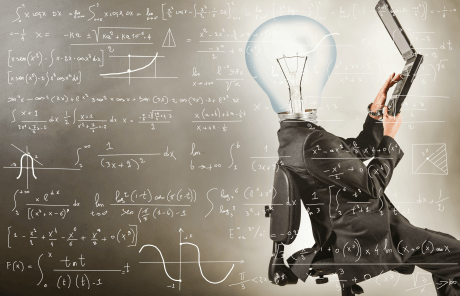The mathematics mistakes that have led to engineering errors

Engineers are known for pushing the boundaries of scientific invention and exploration, and leading humanity down the road towards great achievements. However, every now and then, they prove they're only human like the rest of us, making serious blunders. Of course, engineering mistakes are nothing like an everyday work issue – from nuclear reaction explosions to the sinking of great vessels to explosions of space-exploring rockets; when they fail, they fail on a massive scale.
And while we can certainly learn and grow from our mistakes, some of the oversights and mistakes can have devastating effects.
Design engineers, workers and manufacturing engineers carry huge responsibilities on their shoulders for these mistakes. A slight miscalculation or a lack of communication has led to some of the worst catastrophes ever.
Tom Drew, Redline’s R&D / Engineering Principal Consultant, in the Permanent division looks into how mathematical mistakes have led to other engineering errors.
Mathematics allows us to build bold engineered structures and machines, but even today we still get our figures wrong. For example, in 2004, the internal clock created by Lockheed Martin for LA’s air traffic control ran out. The $2 billion air traffic control system failed by running out of computer memory. Similarly, in 2015, it was discovered that the Boeing 787 also had a similar countdown error.
Modern engineering requires an incredible amount of mathematics, and when we are pushing the limits of what can be calculated, things can occasionally go wrong. The theory is that we learn from those mistakes and update practices to avoid them reoccurring.
Another example is when air traffic control in Los Angeles lost contact with approximately 800 aircraft that were flying above Southern California and its neighbouring states. This was caused by a very simple mathematical mistake in the system where the internal clock had run out.
The choice of number was not as arbitrary as it seems. The exact figure was 4,294,967,295 – the largest value that could be stored on the “32-bit” computer system. That many milliseconds only adds up to around 49 and a half days, but the system was always restarted more often than that, meaning the internal countdown would begin anew.
However, during this incident, the clock ran continuously without a restart; the counter hit zero and the system shut down. This led to a frantic scramble where air traffic control staff had to use their mobile phones to contact aircraft staff and to ask them to connect to a different control centre. In this chaotic situation, 10 aircraft flew closer to one another far closer than air traffic regulations would usually allow, and hundreds of flights were delayed and cancelled because of the counting error.
Our modern lives are built on maths: computer programmes, electronics and engineering. And most of the time this maths works quietly behind the scenes, until ... it goes wrong! We have seen the evolution of engineering and mathematics work hand in hand for centuries, however, can you imagine losing $125 million thanks to a little metric system error? That’s exactly what happened in 1999 when NASA lost a Mars orbiter because one team used metric units for a calculation and the other team didn’t!
Another miscalculation was when 20 Fenchurch Street, the skyscraper known as the Walkie Talkie was built. It had a glass exterior angled like a concave mirror, which caught the sun on bright sunny days, which scorched the pavement and partially melted a parked car. The glass then had to be covered with a non-reflective film to stop the reflection from burning anything else.
It is incredible that with the combination of engineering and mathematics, engineers are able to be innovative and build amazing machinery and engineering structures. Humans were building aircraft before theoretical aerodynamics was fully understood, and steam engines worked way before there was a theory of thermodynamics. But for innovation to progress and design engineering jobs to develop, it will require an in-depth understanding and development of complex mathematics – and once engineers have the right maths, incredible things will continue to be invented.
For further information on Engineering and a variety of Technical jobs, in high technology and electronics environments, click here, please contact Redline Group on 01582 450054 or email info@RedlineGroup.com

